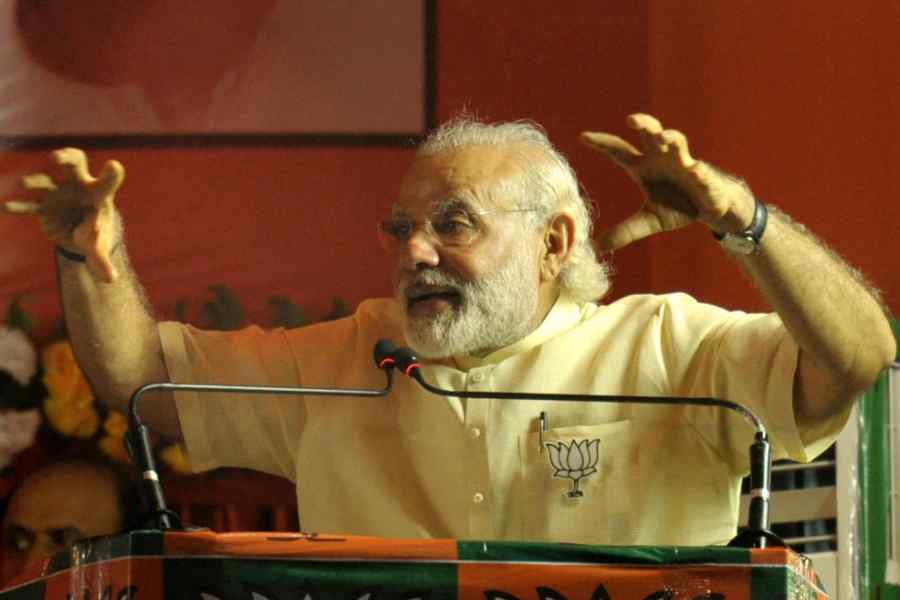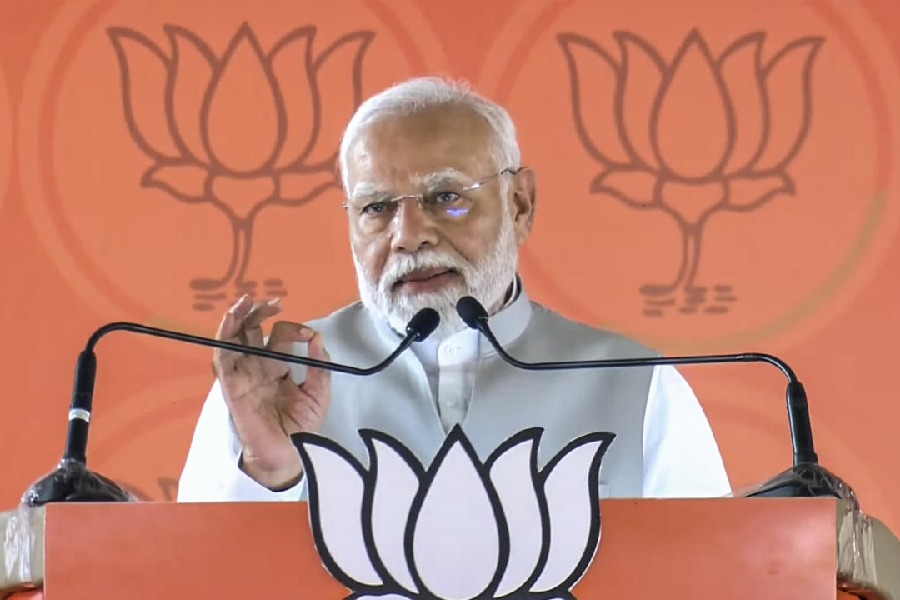As a child, I first heard of the word, ‘mimicry’, as part and parcel of the Gujarati language. When visiting family in Ahmedabad with my parents, one component of the evening entertainment in those pre-TV days would be the singing by talented cousin — the songs would be a mix of bhajans, Gujarati ‘sugam sangeet’ (contemporary, non-filmy, popular music) and melodies from Hindi films. Someone would be a Mukesh expert, or a girl would have cornered Lata while her sister, unsurprisingly, owned the franchise on Asha. Then there were the stars who could do Rafi, Kishore and Manna Dey equally brilliantly and so on. At some point, the singing would be interrupted: ‘Aa Maulik chhe, bahuj pfine mimikri karechhey!’ (This is Maulik, he does very fine mimicry). Maulik would then start by reproducing the famous dialogues and delivery of some Bombay star, say Dev Anand or Dilip Kumar; he would be followed by Divyesh or Smita doing Raaj Kumar or Meena Kumari; and there was invariably one fellow who would produce a ditto of Johnny Walker or Mehmood.
As I began to grasp the concept, I understood this mimicry thing was not just limited to doing impressions of film stars. My mother was a deadly mimic of the people around her and she could produce a one-stroke portrait of someone by just raising an eyebrow in a certain way, puncture someone’s pomposity or stupidity by stringing together just four words in their accent or way of speaking. Sometimes these sketches were made with affection; others were embedded in a sarcastic takedown; on yet other occasions, they were intended to be neutral, as a faithful reproduction of how and what someone had said. More often than not — unless I myself was a target of the mimicking — these sharp snippets led to much hilarity, with the mimicked phrase often becoming compacted into a nickname for that person.
In high school, you realised that almost all students mimicked their teachers, parents and other grown-ups. You recognised this widespread thing as a behavioural instrument the powerless used to symbolically get back at their oppressors. Occasionally, you would overhear staff in people’s houses mimicking their employers but you didn’t always make the connection with your own verbal lampooning of the maths teacher’s stutter or of the martinet headmaster who kept mentioning “trouzhers discipline”. Nor did you deduce, when you heard some aunty create a whole one-act play of her dialogue with her house-help, that maybe the teachers also mimicked us, ghastly students, in the staff room. The fact is, in India, mimicking and exaggerated impersonation have long been deployed by everyone, at all levels of society, for vastly varying aims.
Predictably, the responses from the targets of mimicry are not uniform. In school, hell could break upon your head if some spiteful master or principal overheard you spoofing them; conversely, other teachers were sporting and fully able to laugh at themselves. As you went through the educational system, you learnt that there was often a straightforward correlation between how someone reacted to being the butt of jokes and their personality and their qualities in other areas. The ones quick to take offence and hold long grudges were usually parochial, ignorant, mediocre teachers or administrators, deeply insecure authoritarians who liked to visit unfair punishment on those under their power. They became angry and felt humiliated, partly perhaps because they didn’t have the wit to create scathing comebacks in their own minds and partly because they knew deep inside them that their very real foibles, their inescapable incompetence, servility or pomposity, had been put in the spotlight, that they fully deserved the derision levelled at them.
Of course, mimicry isn’t always about speaking truth to power; a lot of sarcastic impersonation has also come the other way — the powerful flinging mockery down at the powerless, men taking aim at women, the savarna rich laughing at people from lower castes, or people with less money, the mainstream sneering at marginalised groups, the English-medium baba-logarchy imitating people who don’t speak English well.
Mimicry has also always been central to political public speaking all over the world. Someone like Gandhi may never have done it, a proud orator like Vajpayee may have eschewed the mode, but many, many others have reached for mimicking opponents, real or unspecified. If you look at the entirety of Narendra Modi’s election speeches, you can see how much he has depended on low-level mimicry, either of a certain bombastic acting style and dialogue delivery or to deride opponents with a mixture of broad gesture, basic pastiche and nicknames — Maun Mohan Singh, Gungi Gudiya, Italian bahu, Pappu, Didi o Didi, the list is long. This crowd-triggering pantomime has helped Modi win elections for close to twenty years and it will no doubt be deployed again before the next Lok Sabha elections.
In return, stand-up comics have had a field day with people like Modi and Amit Shah for the same reason cartoonists have — both of them are eminently spoofable and provide rich pickings for mimics. Whereas a quietly dignified Manmohan Singh or a bland Sushilkumar Shinde provided no great purchase for verbal or visual wit, a Modi (Mitron!) or a Shah (Chronology Samajhiye) writes his own lampoon scripts.
There is, of course, a second meaning of the word, mimicry, and it comes from biology, where an organism achieves a close external resemblance ‘to some different organism... such that the mimic benefits from the mistaken identity...’ Living as we currently are in a mimicry of democracy with a mimicry of hollowed out checks and balances, with not even a pretence at a free media across most of the country, perhaps the only choice we have is to keep enacting sharply revealing mimicries of the mimicries being inflicted upon us by this mimicry of a government, keep distilling the absurdities and bring them to light wherever we can, in our homes, on the streets, in every nook and cranny of the public sphere, real and virtual, inside Parliament and outside it, on the days leading up to polling day, during counting day and, if need be, even in the days that come after it.










